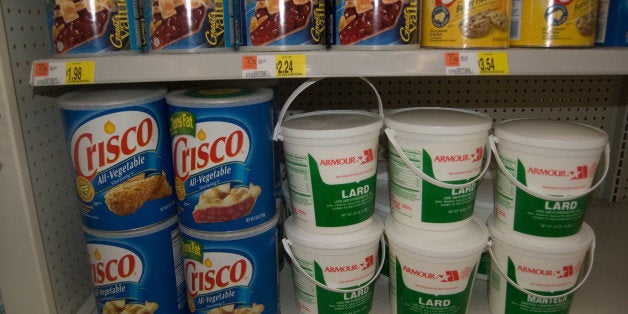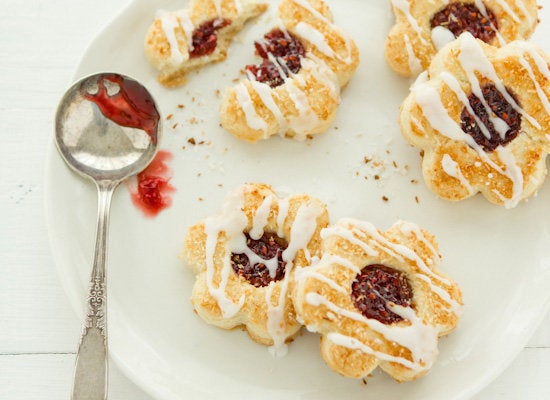
Any seasoned baker knows that shortening is called on to make the crumbliest of pie crusts (though some still prefer to use butter), but why it's called shortening -- and what it is exactly -- is something not many of us actually know.
Crisco is the first thing many people think of when they hear the word shortening, but the term actually extends far past hydrogenated vegetable oil. In fact, shortening refers to any fat that stays solid at room temperature, such as lard.
Shortening got its name because of what it does to flour. Introducing fat into baked goods interferes with the formation of the gluten matrix in the dough. As a result of its interference, gluten strands end up shorter which in turn creates a softer, more crumbly baked good. It's the reason that cakes and pastries are soft and breads not so much. But funny enough, shortening got its name way before anyone knew anything about the chemical reaction of fat and gluten, and that's because the word short used to mean tender in reference to food.
Think about it. Shortbread. Shortcake. These are the crumbliest, most tender of pastries. And they've been around way before we were paying attention to gluten. For concrete proof of this connection, blogger Quod She references many books from centuries ago that use short to describe tender cakes and meats. This continued to happened through the 1970s, too.
So there you have it folks, that's why shortening is called shortening: because it makes our beloved pastries more tender, more short (since it shortens the gluten strands of flour).
